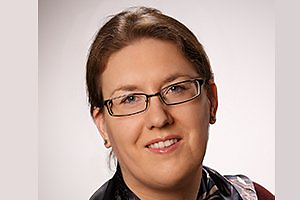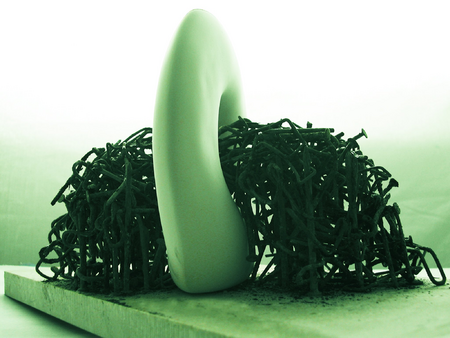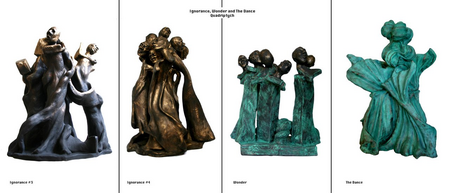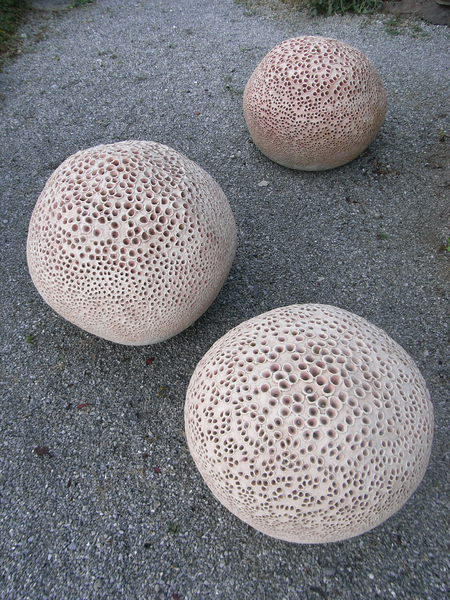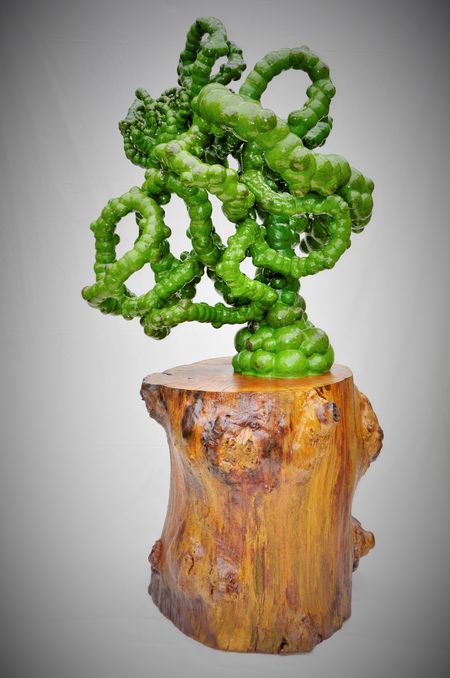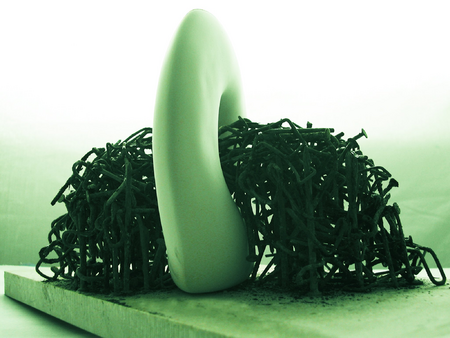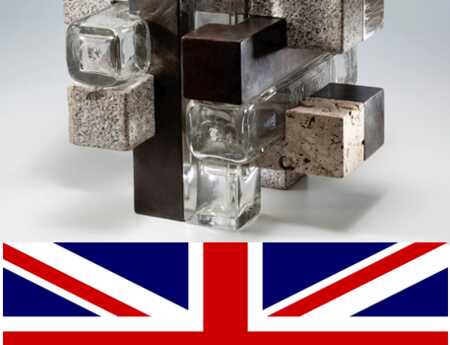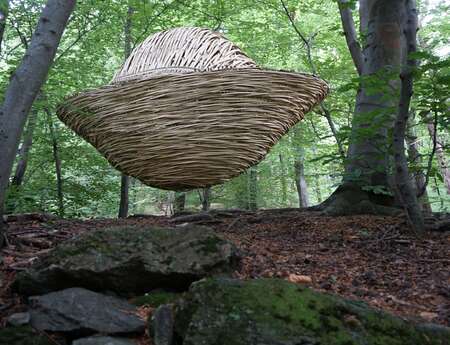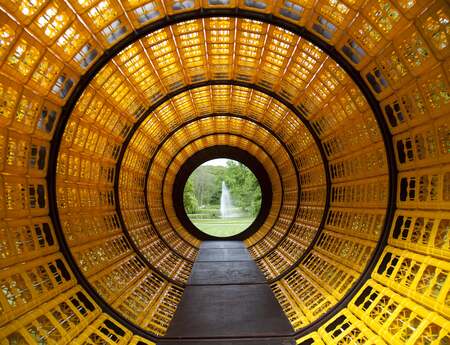Ceramic - Only a "Soft" Material?
Ceramic is a highly plastic material that is versatile to use and easy to shape and design. Four artists will be presented who create great works of art with this underrated material.
All materials used for works of art have special properties. In addition to the technique used, these properties can decisively influence the appearance of a work of art and its interpretation.
In the past, attempts have been made not only to press the individual materials into a hierarchy, but also to separate the idea from the haptic execution, which can lead to the rejection of the general subject. The material is therefore often regarded as the lowest part of a work of art. Furthermore, a hierarchy of values was formed between individual material groups and within these groups. This hierarchy and its attributions are still anchored in the valuation of works of art today.
Throughout time, ceramic materials were predominantly used in the artisanal field and in the form of building materials, crockery, and utensils. In the artistic environment, the use of the material for artistic expression was limited in former times mostly to its use as a subordinate aid for illustration (Sketch/Bozzetti).
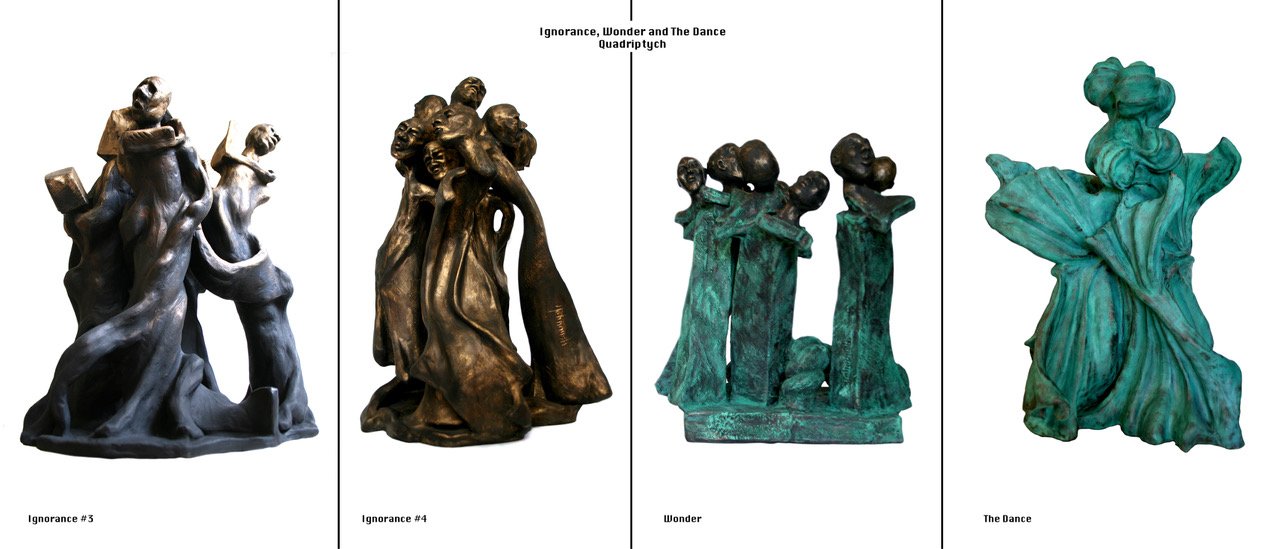
Menoush Modonpour "The Dance" (Project of 4 Sculptures), Ignorance,
Wonder and The Dance (Quadriptych), Ignorance #3, 59 x 46 x 49 cm,
Ignorance #4, 68 x 48 x 48 cm, Wonder, 50 x 50 x 50 cm
In the material hierarchy, ceramic is located in the lower area. This is due to the easy workability of this material. Thus, the material was considered to not be very challenging (and was viewed negatively especially in the NS period) and was assigned to the category of materials considered female as it easily submits to the shape of one’s will.
Ceramic is the generic term for all clay-like materials, such as earthenware, stoneware, porcelain, or clay. The workpieces can be dried or fired. By drying, works of art made of ceramics become more durable and are only stable after firing and cannot be further deformed or plasticized. Depending on the water content and form, the works are up to 14% smaller after drying and firing due to shrinkage of the material.
Ceramic materials naturally come in different colours and are plastic materials. Depending on the type of processing, works made of ceramic materials may have a smooth and almost polished surface, sharp-edged structures, or crack-like and perforated areas. Ceramics can be garnished in a further work step with many different colour glazes or effect glazes (which still need to be fired), or lacquers (which must be dried). These paint applications are partially able to simulate other materials.
In the following, four artists of Sculpture Network who work with ceramic materials in very different ways will be introduced. These artists combine the ceramic materials in part with other materials to create exciting and interesting works.
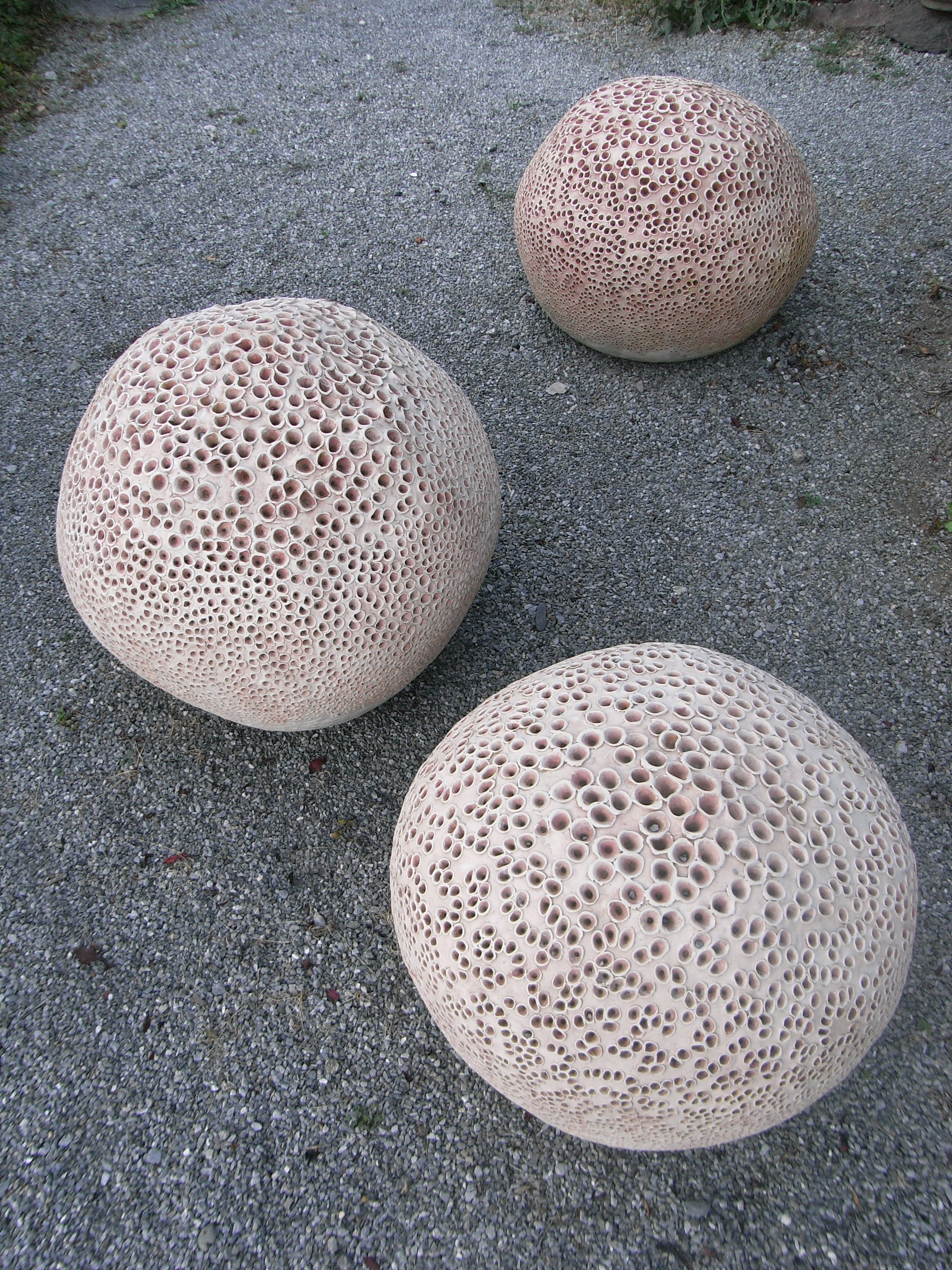
Eva Oertli, "Kugeln", D 70 bis 95 cm,
2010, ceramic, copyright: Eva Oertli
Eva Oertli is a sculptor who initially worked with stone. For her, ceramic was initially only material she used for the purpose of making small sketches, making designs, and creating three-dimensional pieces before transforming them into stone. However, she became more and more fascinated by the soft material. Due to its plasticity and the longer formability in a soft state, she was able to change designs over and over again, to bring in new ideas, to continuously change its form, and to adapt it into its final respective idea. In addition, there was a playful component of the material that had previously not existed when working with stone.
This playful process is often still visible in the works. The softness of the material is preserved during the shaping process and despite the subsequent hardening process, the proverbial plasticity of the material remains visible in its final form. Despite the playful approach in the creation of a piece, the works are composed before the permanent solidification, the firing, takes place. The works seem organic or sponge-like due to their surface structures. Above all, the work Kugeln shown here shows a certain plastic softness, which nevertheless shows a structure without sharp edges or geometric regularities. The "spheres" appear to the viewer as grown structures. The many small openings in the surface also create the impression that the fruiting bodies could reproduce themselves at any time and spread out like a net.
Menoush Modonpour is a painter and sculptor. Her works focus on the relationships between people, the connections to their environment, and the inner spirituality in the surrounding universe. Her works do not subject themselves to the cultural traditions from which the artist originated, instead, they shift boundaries and break them up. Menoush Modonpour’s work aims to point out the solidarity and equality of all human beings, regardless of religious, cultural, gender, or ethnic differences.
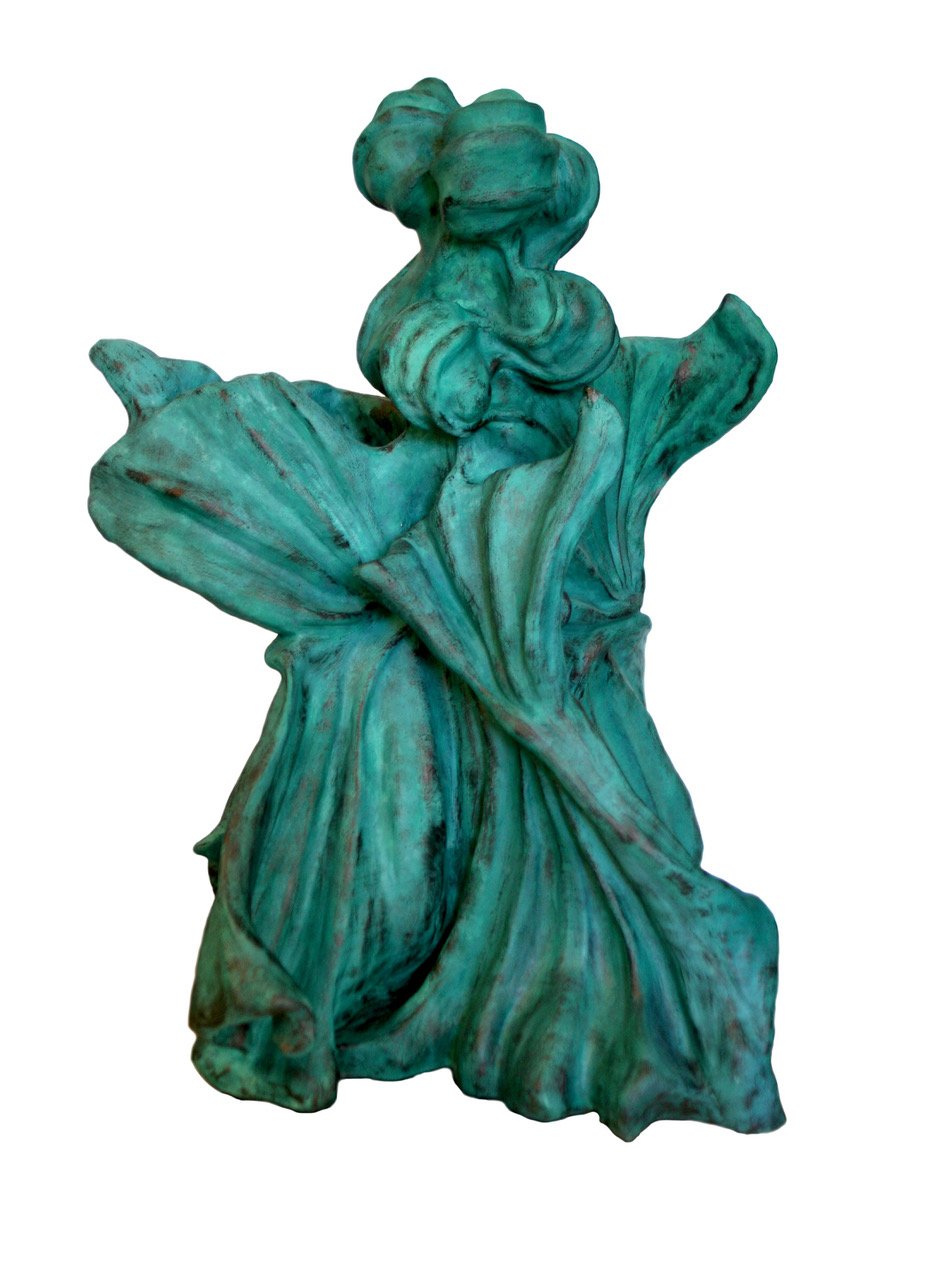
"The Dance", 61 x 48 x 44 cm, 2019,
clay, copyright: Menoush Modonpour
The multi-part work, The Dance, pays homage to the spiritual ascent through spirit and love. A dance that honours creation and symbolizes overcoming and freedom. The works of the artist seem bouyant and free - dynamic and moving. In spite of its abstraction, the dance depicted shows a devotion to dancing and the lightness of movement can be seen. It is almost a kind of ecstatic dance in which the body gets into an intoxicating, almost unstoppable movement, while the mind comes to rest and can glide into inner reflection and contemplation. Thus, in The Dance, observers can discover the overcoming of everything negative and the emergence of harmony and tranquillity.
The sculptor Jonathan Mollner places "life" at the centre of his work. For him, form is influenced by the working process. Personal emotions and impressions are directly reflected in the soft material of ceramics, spontaneous and unplanned objects develop. The artist works on the structures of life and on "life" itself. He sees these structures of matter as spherical entities, the atoms and molecules that make up life. As in real life, these spheres are interconnected and are in communication with one another. Nevertheless, despite their small size, these spheres form the basis for the whole universe.
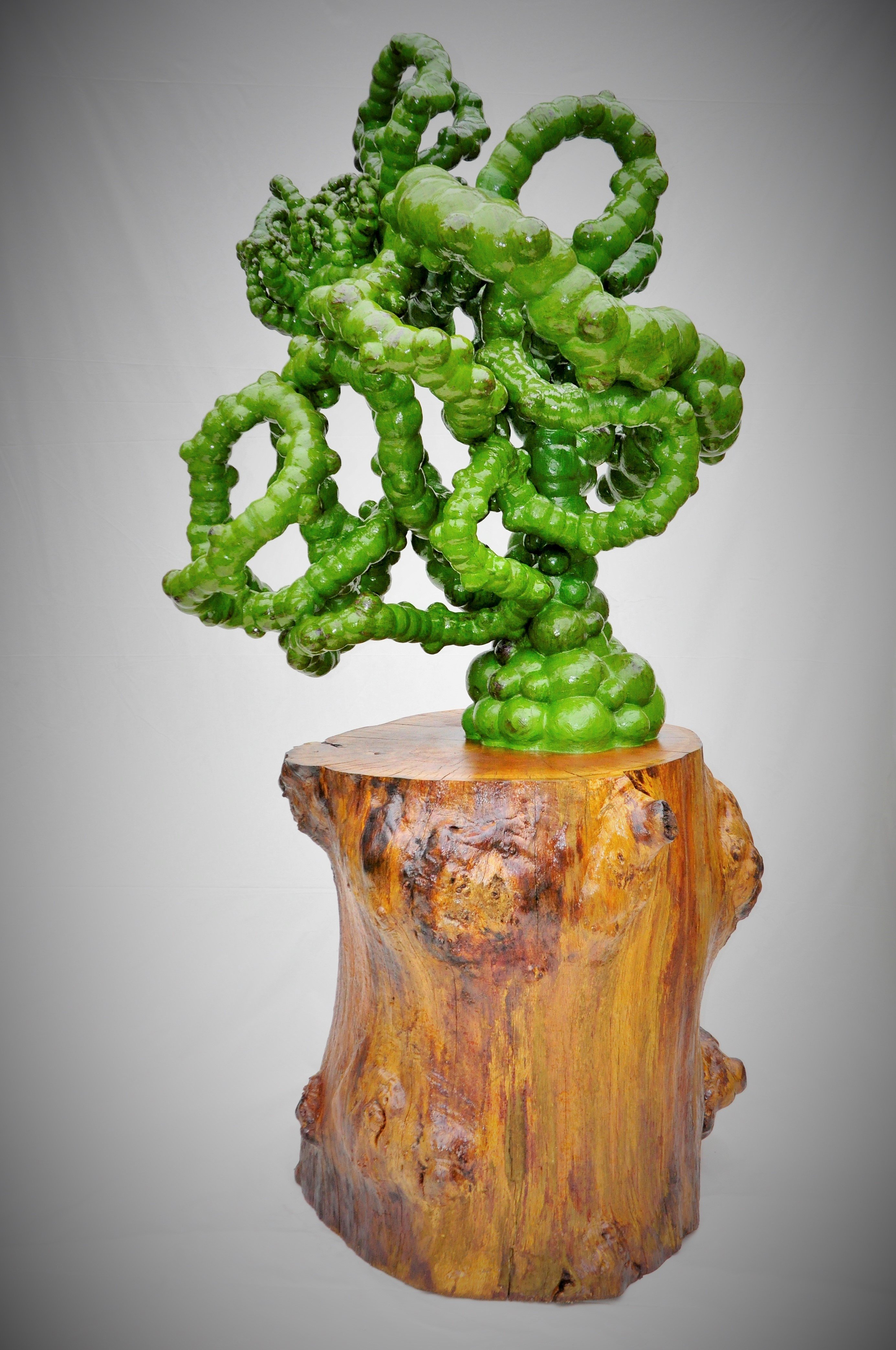
Jonathan Mollner, "Evolution",
240 x 130 x 117 cm, 2019, glazed ceramic,
oak wood, copyright: Jonathan Mollner
Amongst the works of Jonathan Mollner, the work titled Evolution shown here represents, with its approach to the complex structure of life, an image of the whole universe in its inner structure. The works appear, also through their grass-green colouring, to have grown and become alive, and seem to have an organic, perhaps vegetable structure, which in its abstraction on the one hand looks like something alien and on the other hand again like something familiar. In the sculptures, as well as in real life, various influences determine the spreading and networking of organic structures, which each time open up a new, fascinating world.
For sculptor Thomas Welti, apart from a few stone and wood works, the focus is on ceramic material. For him it is an essential point in the design process to be able to make changes or corrections to the design at any time, which makes ceramics the most ideal material for his work. Furthermore, he is fascinated by the naturalness and earthiness of the ceramic material, which presents itself in a moist state and can therefore be shaped again and again in a new and imaginative way. In a further step, the artist enhances his works with colour. For this, Welti uses either coloured glazes, which have to be applied and re-fired, or cold painting.
The main focus in the artist’s body of work is on the female body. Most of Welti's figures, despite their partly Ruben-like elaboration, appear weightless and light, seem to dance, and have a girlish appearance. The representations of the bodies in almost supernaturally bent and given poses are reminiscent of ballets or performances.
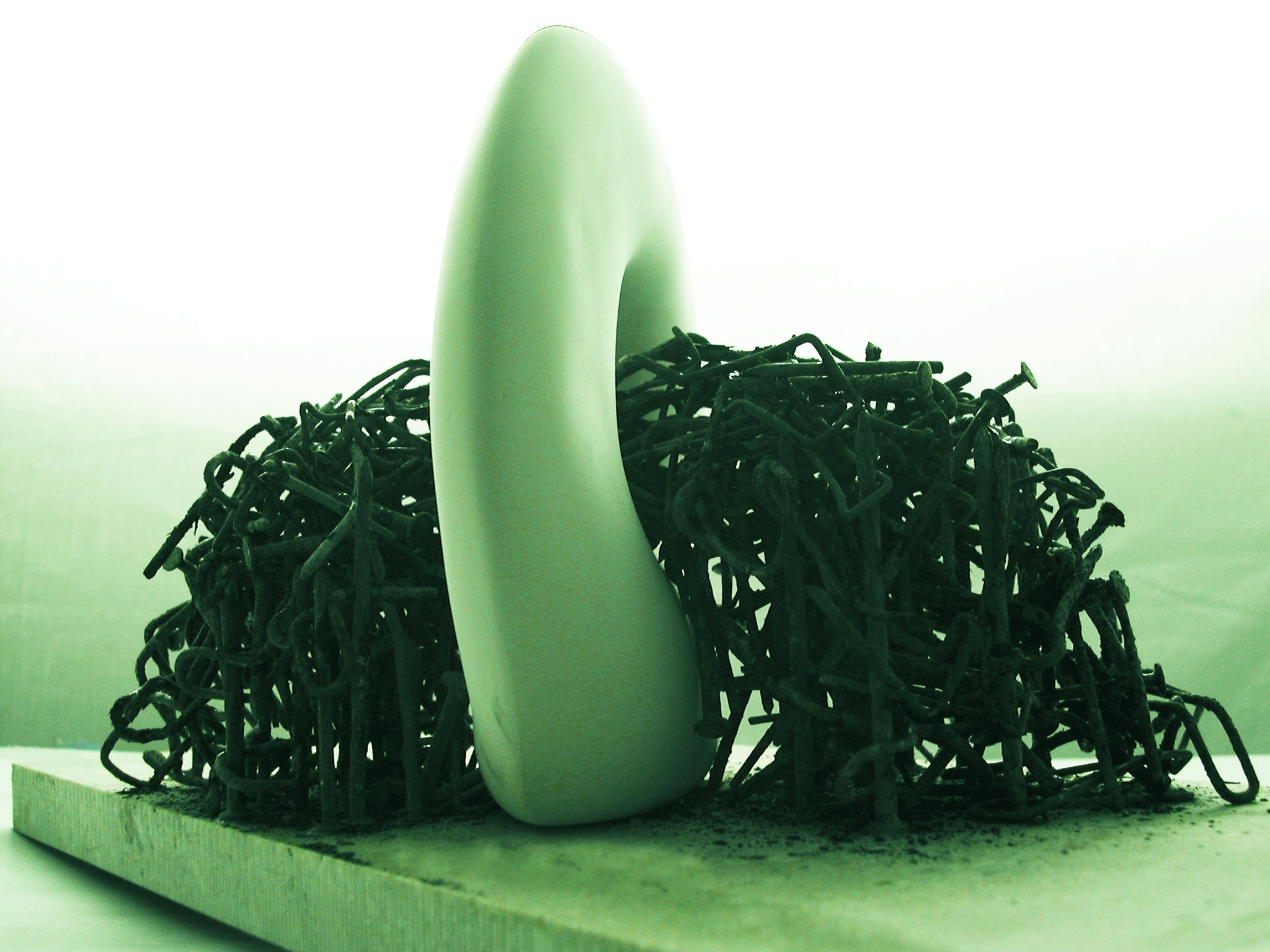
mixed media, clay, metal, copyright: Thomas Welti
The work Piercing shown here is a mixed media work. Welti combines in this piece a multitude of dark iron nails with the curved white ceramic. The combination in the work Piercing unites a strong contrast of smooth, perfect surface with the restless and agitated mass of dark and rough iron elements. Welti refers here to the ancient tradition of piercing body parts, which already has a long history and recently experienced a renaissance. The demarcation to others becomes visible in the wearing of the piercing. The pointed nails "puncture" the round ceramic body like an abstract piercing, which has a large opening in its center and represents a belly button, and in their multiplicity appear to the viewer symbolically like an organic stream, which breaks through the opening.
All the works presented here have the shared trait of using all the advantages of ceramic as a material and that the material optimally supports the statements of the works of art.
For more info about the artists:
Eva Oertli: http://www.evaoertli.ch
Menoush Modonpour: http://www.mehnoush.me
Jonathan Mollner: https://www.jonathan-mollner.com
Thomas Welti: https://welti-art.ch
Author: Dr. Eva Daxl
Eva Daxl studied art with a focus on sculpture. In her PhD thesis she wrote about ceramic materials in art criticism. She is therefore familiar with three-dimensional works of art in theory and practice.
